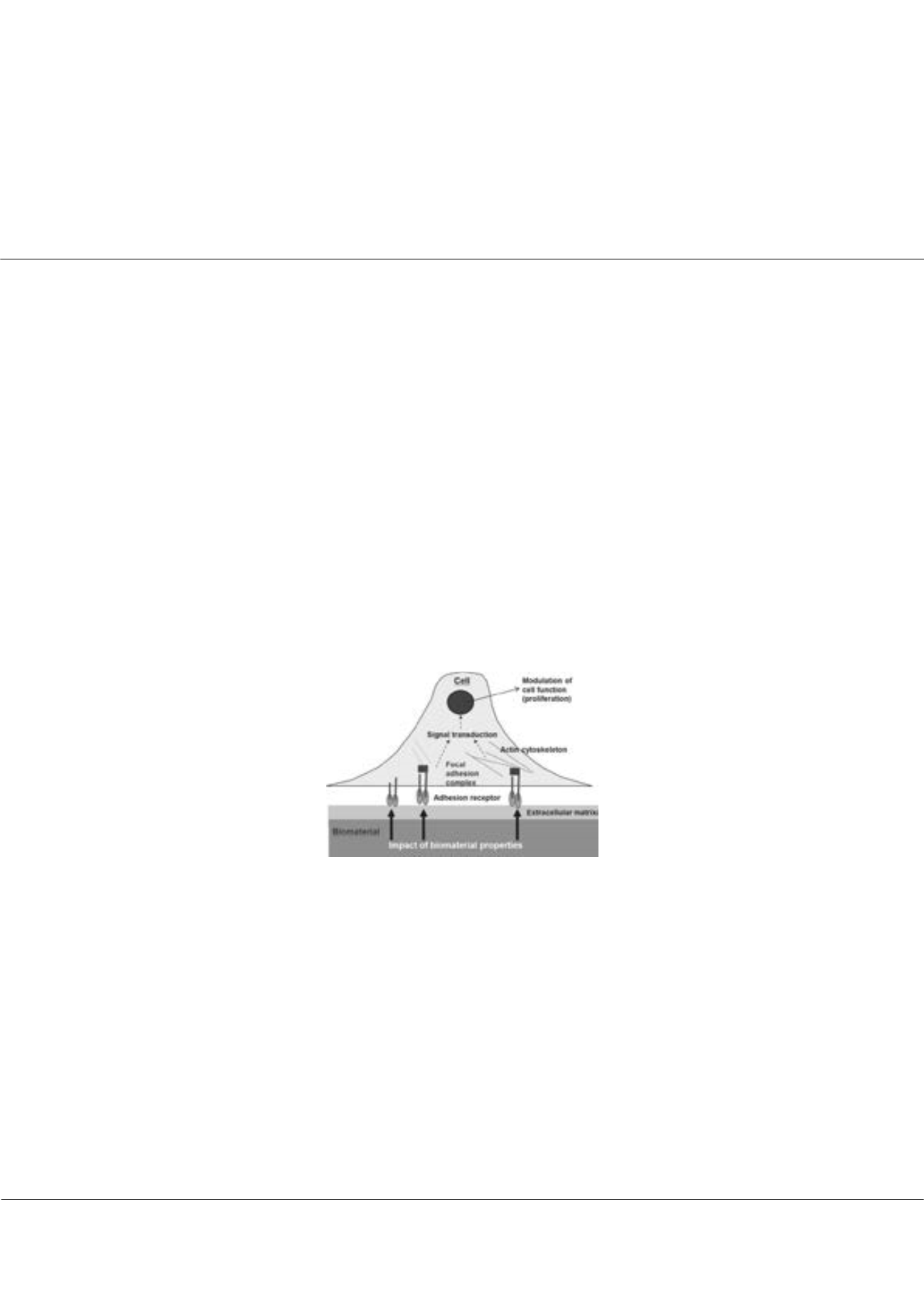

Page 92
conferenceseries
.com
Volume 8
Journal of Biotechnology and Biomaterials
ISSN: 2155-952X
Biomaterials 2018
March 05-06, 2018
March 05-06, 2018 | Berlin, Germany
3
rd
Annual Conference and Expo on
Biomaterials
Intracellular calcium ion signaling dependent on surface properties of biomaterials
Susanne Staehlke, Henrike Rebl, Martina Gruening
and
Barbara J Nebe
University of Rostock, Germany
T
he first critical courses for assessing the suitability of a new biomaterial in medicine are biofunctionality and compatibility
of the biosystem at the site of its effect. Topographical as well as chemical surface properties of biomaterials have a specific
impact of integration and regeneration in bone tissue. The surface stimuli can affect the cell behavior, either detrimentally or
favorably. So, the osteoblasts recognize their surrounding by adhesion receptors connected intracellularly with focal adhesion
complexes. The associated intracellular actin cytoskeleton is in control for cell morphology, migration as well as for the
transmission of signals and forces of the surroundings into the cells. External signals from physico-chemical environments
finally influence the cell function (Figure 1). However, it is unclear as to which physiological processes will be affected in detail.
In the previous studies, we could find out that defined geometrical micro-pillars influenced the cell architecture and the cell
function of human MG-63 osteoblasts. In addition, the mobilization of intracellular calcium ions (Ca
2+
) after ATP stimulus
was significantly impaired in cells growing on micro-pillars. It raises the question whether the mobilization of intracellular
Ca
2+
, as “second messenger”, represents a sensitive parameter for
in vitro
studies of cell-biomaterial interactions. In our recent
studies we examined the cell physiology and signaling on different chemical properties of biomaterials. The data indicate an
increased intracellular Ca
2+
signaling on plasma-chemically modified titaniumwith improved cell adhesion and spreading. The
understanding of complex cellular behavior and intracellular signaling events is critical for the acceptance of new biomaterial
surfaces in regenerative medicine.
Figure 1: Scheme of the interaction of cells with biomaterials
Recent publications
1. Moerke C, Mueller P and Nebe B (2016) Attempted caveolae-meadiated phagocytosis of surface-fixed micro-pillars by
human osteoblasts. Biomaterials 76:102-114.
2. Staehlke S, Koertge A and Nebe B (2015) Intracellular calcium dynamics in dependence on topographical features of
titanium. Biomaterials 46:48-57.
3. Rychly J and Nebe B (2013) Cell-material-interaction. BioNanoMat. 14:153-60.
4. Matschegewski C, Staehlke S, Loeffler R, Lange R, Chai F, et al. (2010) Cell architecture-cell function dependencies on
titanium arrays with regular geometry. Biomaterials 31(22):5729-40.
5. Luethen F, Lange R, Becker P, Rychly J, Beck U, et al. (2005) The influence of surface roughness of titanium on β1- and
β3-integrin adhesion and the organization of fibronectin in human osteoblastic cells. Biomaterials 26:2423-40.
Susanne Staehlke et al., J Biotechnol Biomater 2018, Volume 8
DOI: 10.4172/2155-952X-C1-088
















